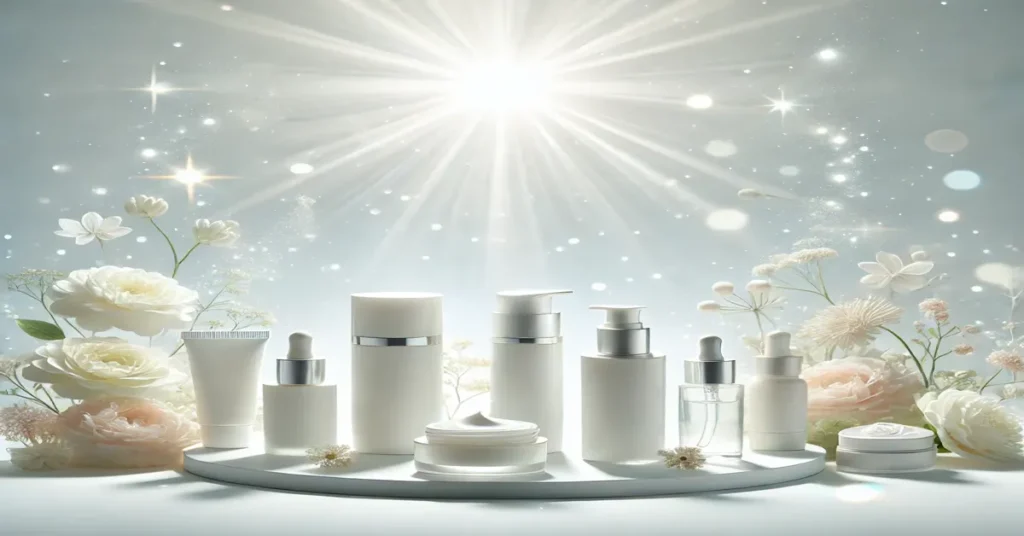The pursuit of radiant, even-toned, and glowing skin is a timeless aspiration across cultures. Over the years, the skincare industry has evolved, introducing innovative products and treatments that cater to various skin concerns. Among these, the concept of a “whitening line” has gained significant popularity. This article dives deep into the world of whitening skincare lines, exploring their purpose, components, benefits, and how to incorporate them into your routine.
What is a Whitening Line?
A whitening line refers to a range of skincare products designed to lighten, brighten, and even out the skin tone. These products often target hyperpigmentation, dark spots, and uneven complexion caused by various factors such as sun damage, aging, hormonal changes, or acne scars. Contrary to its name, the purpose of these products is not to alter the skin’s natural tone but to restore clarity and radiance by addressing discoloration and dullness.
Whitening products are often enriched with ingredients that inhibit melanin production, exfoliate dead skin cells, and provide hydration for a healthy glow. Popular products within a whitening line typically include cleansers, toners, serums, creams, masks, and sunscreens.
The Science Behind Skin Whitening
Skin tone is largely determined by melanin, a pigment produced by melanocytes in the skin. When these cells overproduce melanin due to external or internal triggers, it leads to pigmentation issues. Whitening products work by:
- Inhibiting Melanin Production: Key ingredients in whitening lines reduce melanin synthesis by targeting tyrosinase, an enzyme responsible for pigment production.
- Exfoliation: Many whitening products contain mild exfoliants to remove dead skin cells and reveal a fresher, brighter layer of skin.
- Antioxidant Action: Oxidative stress caused by free radicals can exacerbate pigmentation. Whitening products often include antioxidants to combat this damage.
Key Ingredients in Whitening Lines
The efficacy of a whitening line depends heavily on its ingredients. Here’s a closer look at some of the most commonly used and scientifically backed ingredients:
- Vitamin C:
- A potent antioxidant that brightens skin and reduces the appearance of dark spots.
- Stimulates collagen production, enhancing skin texture and elasticity.
- Niacinamide:
- A form of Vitamin B3 known for its skin-lightening properties.
- Reduces redness and inflammation while improving the skin barrier.
- Alpha Arbutin:
- A natural derivative of hydroquinone that lightens hyperpigmentation and evens out skin tone.
- Safe for most skin types and widely used in serums.
- Kojic Acid:
- Derived from fermented rice, it inhibits melanin production.
- Commonly found in creams and serums.
- Licorice Extract:
- Contains glabridin, which reduces pigmentation and has anti-inflammatory benefits.
- Hyaluronic Acid:
- While not directly whitening, it hydrates the skin, enhancing its natural glow and radiance.
- Retinol:
- A derivative of Vitamin A that accelerates skin cell turnover and reduces dark spots.
- AHAs and BHAs:
- These acids exfoliate the skin, reducing dullness and allowing other active ingredients to penetrate better.
Benefits of Using a Whitening Line
- Reduction of Dark Spots and Hyperpigmentation: Whitening products effectively fade dark spots caused by acne, sun damage, or hormonal changes.
- Even Skin Tone: These products help balance uneven skin tone, giving the face a smoother and more unified appearance.
- Brighter Complexion: Regular use can restore the skin’s natural radiance, making it look healthier and more vibrant.
- Boosted Confidence: Clearer, brighter skin often boosts self-esteem and confidence.
- Improved Skin Texture: Many whitening products also focus on hydration and exfoliation, leaving the skin soft and smooth.
- Prevention of Future Pigmentation: Ingredients like Vitamin C and niacinamide not only treat existing discoloration but also prevent new spots from forming.
Types of Whitening Products
Whitening lines typically include various products, each serving a specific purpose in your skincare routine:
- Cleansers:
- Formulated to gently cleanse the skin while preparing it for subsequent treatments.
- May contain mild exfoliating agents or brightening ingredients.
- Toners:
- Restore the skin’s pH balance and remove any remaining impurities.
- Often infused with hydrating and soothing agents.
- Serums:
- Highly concentrated and packed with active ingredients like Vitamin C, niacinamide, or alpha arbutin.
- Target specific concerns such as dark spots and uneven tone.
- Moisturizers:
- Lock in hydration and enhance the skin’s barrier function.
- Many include SPF for daytime use.
- Masks:
- Provide an intensive treatment for dull or uneven skin.
- Typically used weekly for a boost of radiance.
- Sunscreen:
- Crucial for preventing further pigmentation and protecting the skin from UV damage.
- Often included as part of a whitening line.
How to Use a Whitening Line Effectively
For optimal results, follow a structured skincare routine:
- Morning Routine:
- Cleanse: Start with a brightening cleanser to refresh your skin.
- Tone: Apply a toner to prepare your skin.
- Serum: Use a Vitamin C serum to target pigmentation and protect against free radicals.
- Moisturize: Apply a lightweight, hydrating moisturizer with brightening properties.
- Sunscreen: Finish with a broad-spectrum SPF to shield your skin from harmful UV rays.
- Evening Routine:
- Cleanse: Remove makeup and impurities with a gentle cleanser.
- Tone: Use a toner to calm and balance the skin.
- Serum: Apply a niacinamide or retinol serum to repair and brighten overnight.
- Moisturize: Use a nourishing night cream to seal in moisture.
- Weekly Treatments:
- Use a brightening mask or exfoliating product once or twice a week for added radiance.
Safety and Considerations
- Patch Test: Always perform a patch test before introducing new products to avoid adverse reactions.
- Sun Protection: Consistent sunscreen use is essential to protect your skin and enhance the effectiveness of whitening products.
- Avoid Overuse: Overusing products, especially those with active ingredients like AHAs, BHAs, or retinol, can irritate the skin.
- Consult a Dermatologist: If you have severe pigmentation or sensitive skin, consult a dermatologist before starting a whitening regimen.
Popular Whitening Lines in the Market
Several brands have developed high-quality whitening lines to cater to diverse needs. Some globally recognized options include:
- Olay White Radiance:
- Features products enriched with Vitamin C, niacinamide, and pearl extracts for a luminous glow.
- Kiehl’s Clearly Corrective:
- Offers serums and moisturizers with activated Vitamin C and white birch extract.
- The Ordinary Alpha Arbutin 2% + HA:
- A budget-friendly yet effective serum targeting dark spots and uneven tone.
- Shiseido White Lucent:
- Focuses on advanced brightening technologies to address deep pigmentation.
- Drunk Elephant C-Firma Serum:
- Packed with antioxidants and fruit enzymes for brightening and firming.
Cultural Perspectives on Whitening
In some cultures, the desire for fairer skin stems from deep-rooted societal standards. It’s important to approach the use of whitening products with the understanding that beauty is not confined to a particular skin tone. The focus should be on achieving healthy, radiant skin, regardless of complexion.
Conclusion
A whitening line can be an effective addition to your skincare routine if you’re looking to address pigmentation, dullness, or uneven tone. By understanding the science behind these products and choosing those with proven ingredients, you can achieve brighter, healthier-looking skin. Remember, consistency, sun protection, and a holistic skincare approach are key to long-lasting results.
FAQs
1. Are whitening products safe for all skin types?
Yes, most whitening products are formulated for various skin types. However, individuals with sensitive or reactive skin should consult a dermatologist and conduct patch tests before using new products.
2. Can whitening products permanently change my skin tone?
No, whitening products are designed to brighten and even out your natural skin tone by reducing pigmentation and discoloration, not to alter your inherent complexion.
3. How long does it take to see results from a whitening line?
Results vary depending on the product and individual skin condition, but most people notice improvements within 4-8 weeks of consistent use.
4. Do I still need sunscreen if I use a whitening line?
Yes, sunscreen is crucial. Without it, UV exposure can counteract the benefits of whitening products and cause further pigmentation.
5. Can I use whitening products with other active ingredients like retinol or acids?
Yes, but use caution. Overloading your skin with multiple actives can lead to irritation. Introduce products gradually and consult a dermatologist for guidance.
6. Are natural ingredients in whitening lines effective?
Yes, natural ingredients like licorice extract, kojic acid, and arbutin are scientifically proven to help lighten pigmentation and brighten the skin. Always choose products from reputable brands to ensure safety and efficacy.







